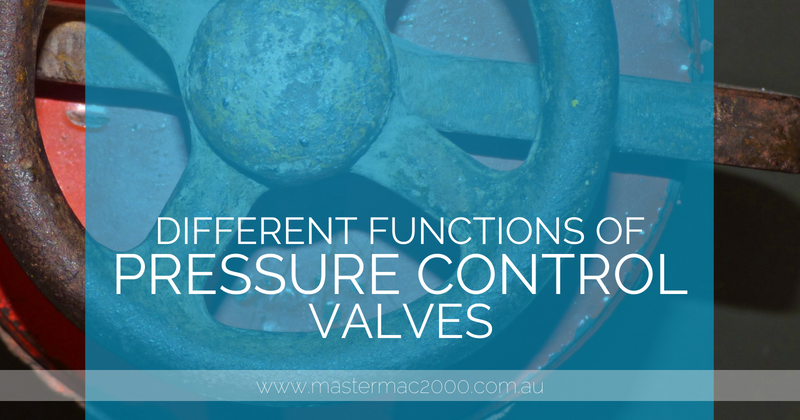Different Functions of Pressure Control Valves
What are system functions that pressure control valve delivers?
Hydraulic energy is energy produced when the prime mover, which is usually an electric motor, drives the pump where hydraulic pressure develops by resistance to the pump flow. And when the pump flow is not recirculated back to the tank during the periods where there’s no action done on the circuit, the hydraulic system may suffer damages. These non-action periods happen by stalling an actuator, or when the end of the circuit sequence is reached, or while the time-delay periods of the circuit sequence occur.
For the hydraulic fluid to avoid power wastage, overheating, and hydraulic system damage, a variety of designed systems was utilised by circuit designers to control the pump flow and maximum system pressure in the course of non-action periods.
To control the actuator force and to identify and single out pressure levels which determined machine operations ought to occur, pressure control valve is used in hydraulic systems.
Oftentimes, control valves are hard to identify due to their descriptive names. But note that the function of the valves in the circuit is the basis of its name. And here are as follows:
- Brake valve
- Counterbalance valve
- Pressure-relief valve
- Pressure-reducing valve
- Pressure-sequence valve
- Unloading valve
They are mainly used to:
- Limit maximum system pressure at a safe level
- Regulate or reduce pressure in specified parts of the circuit
- Unload the pressure in the system
- Assist the actuators’ sequential operation in a circuit with control in the pressure
- Reduce or lower down pressure levels from the main circuit to a lower pressure
Should you have concerns regarding pressure control valve, comment down below!

About MasterMac2000: Your Trusted Pneumatic & Process Automation Partner.
LEADING THE INDUSTRY: Established in 1989, MasterMac2000 has grown to become one of Australia's largest privately owned pneumatic and process automation companies. We stock top-quality brands like Univer, Mack, Tolomatic, Mac, Piab, American, and Rotoflux in Brisbane.
SERVING QLD & NORTHERN NSW: We proudly service Queensland and Northern New South Wales for all your pneumatic and process equipment needs. Our mission is to provide the best pre and post-sales support while actively expanding our client base.
SOURCING HARD-TO-FIND PARTS: Not only do we stock quality components, but we also excel at sourcing those elusive, hard-to-find parts. With our extensive database and global network of contacts, getting the parts you require is as easy as a call to our highly skilled, professional sales team.
DEDICATED TO YOUR SUCCESS:
- Decades of expertise in pneumatics & process automation
- Carefully curated selection of world-class brands
- Exceptional sourcing capabilities for speciality parts
- Knowledgeable sales staff dedicated to finding solutions
- Unwavering commitment to customer service excellence
About The Author
Stuart Havill
Stuart Havill is the owner and manager of MasterMac2000, Queensland's largest privately owned pneumatic and process valve company.
With his early working career as a maintenance fitter for Boral in 1992, Stuart has spent his life in the field of pneumatics and process equipment. He gained extensive experience in plant design, maintenance, repairs, fabrication, and site management.
In 1996, he transitioned to a pneumatic sales technician role at MasterMac2000, where he excelled in key account management, providing cost-effective solutions, and managing a sales team of 9 employees.
Since 2002, Stuart has been the manager at MasterMac2000, overseeing the company's growth and establishing it as a leader in pneumatic automation and process valve engineering. His expertise spans customer training, CRM setup, industrial compressor sizing and installation, and turn-key project management.
Under Stuart's leadership, MasterMac2000 has been servicing the industry since 1988, with 5 full-time sales representatives covering northern rivers NSW, Queensland, Northern Territory, and PNG. The company prides itself on providing the best-priced solutions to all customers in the marketplace.
View Stuart’s LinkedIn profile to learn more about his expertise in pneumatics and process equipment.
